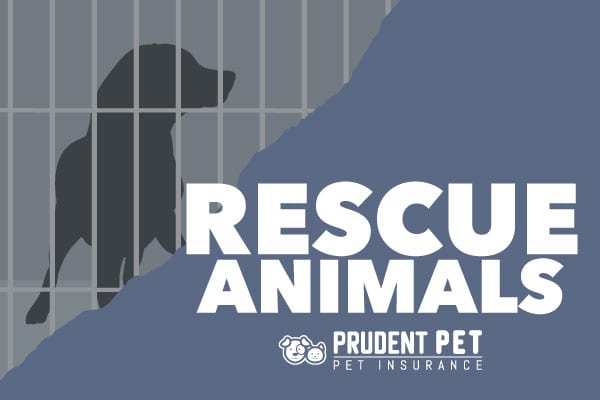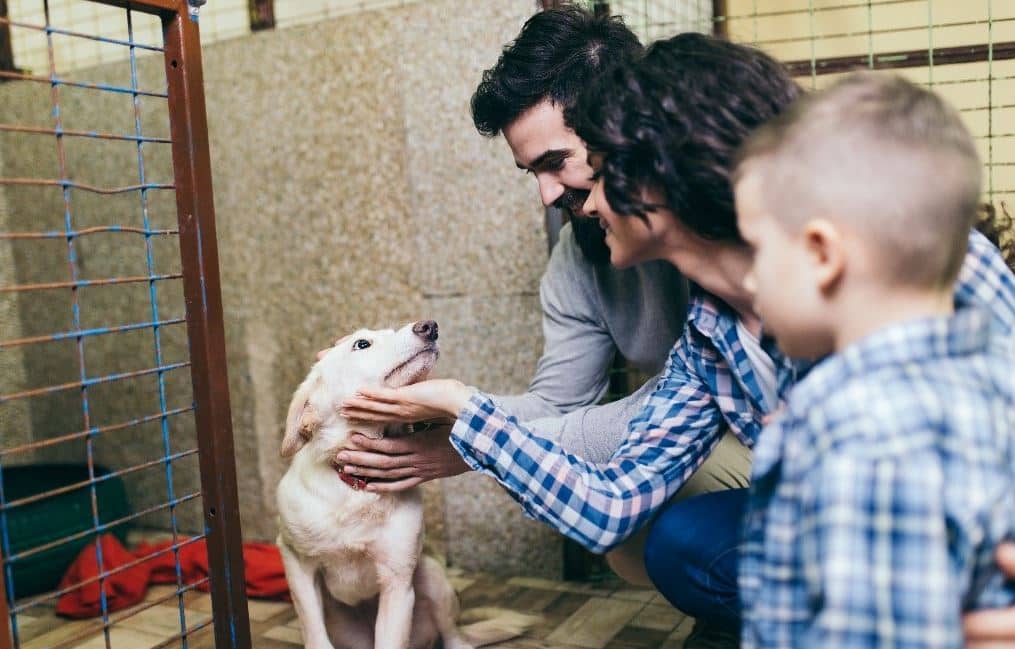We love our pets more than anything. We care for them, feed them, and provide for them. They depend on us and show us, unconditional love, in return. Unfortunately, not all animals have it so lucky. It’s estimated that 6.5 million dogs (3.3 m) and cats (3.2 m) enter U.S. animal shelters yearly. At Prudent Pet, we think this number is far too big.
These animals have no choice. The decision is not theirs to be placed in a shelter. As pet lovers, understanding rescue and shelter animals and how to help them is our duty.
Rescue and Shelter Animal Statistics 2019
Educating our peers and spreading awareness is extremely important in helping to bring awareness to this epidemic. By providing ample information regarding shelter and rescue animals to the public people can help improve the lives of these animals nationwide. Below are some startling statistics all animal lovers should be conscientious of:
- 5 million shelter animals are euthanized yearly.
- Out of the 1.6 million animals received by shelters, only 23% of cats and 35% of dogs are adopted.
- Since 2012, the percent of stray cats has gone down from 35% to 27%.
- Illnesses, aggressive behaviors, and problematic behaviors account for 47% and 42% of rehomed dogs and cats, respectively.
These figures, provided by the American Society for the Prevention of Cruelty to Animals, should encourage animal lovers to reconsider where they get their pets from. With all the different cat and dog breeds, some owners prefer to purchase their pets from a breeder. While there is nothing wrong with this, there are many animals waiting in rescues and shelters to find their new loving home. While the above facts may be alarming, improvements regarding re-homing shelter and rescue animals have been increasing steadily over the years.
- The number of dogs & cats entering shelters annually has declined by 700,000 since 2011.
- Euthanasia for shelter animals has declined from 2.6 million to 1.5 million since 2011. Largely due to the increase in adoptions & strays being successfully returned to their owners.
- Approximately 1.6 million dogs & 1.6 million cats are adopted from shelters each year.
- Around 710,000 stray animals are returned to their owners: 620,000 dogs and 90,000 cats.
Difference between a Rescue and Shelter Animal
Did you know there are two different types of place you can adopt animals from? These are animal shelters and animal rescues. Many people aren’t familiar with the similarities and differences between shelters and rescues. If you’re looking to adopt you can explore these two options, but no matter which one you choose, you’re helping to save a life.
Shelters
Shelters are typically government-funded, meaning all expenses and standard medical attention is funded federally, locally or by the state. These expenses include; neutering & spaying, vaccinations, deworming, and flea & heartworm protection. Unfortunately at shelters when an animal becomes sick, the only solution is euthanasia. This is because government funding will not cover the cost of illness that may arise within shelters caused by the sick individual. In this situation, euthanasia is considered the only certain deterrence for the spread of disease and illness.
Rescues
Rescues, on the other hand, receive no government funding. More importantly, rescues do not euthanize their animals when they become sick or there is not enough space for them at the facility. Although due to these high costs animal rescues accrue, many rescues fail. Donations are extremely important to helping animal rescues stay afloat and to nurture the animals that desperately need it.
Often, rescues work with shelters. When a shelter has difficulty placing a healthy and pet-worthy animal, a rescue will take in the animal to foster rather than having the shelter euthanize them. Shelters almost always run out of space for animals but rescue groups work hard to find kind-hearted people willing to foster these homeless animals.
The Three Types of Animal Shelters
- Municipal Shelters: Houses strays, abandons, and unwanted animals on behalf of the local government.
- No-kill Shelters: Private organizations similar to a municipal shelter however no healthy animals may be euthanized.
- Not-for-profit Rescue Organizations: Operate through a network of volunteer foster homes. Committed to a no-kill policy.
Rescue and Shelter Employees
Rescue organizations are mainly run by volunteers, while shelter employees are paid. A shelter employee can expect to make around $35K annually, coming from government funding. Just because these two different workers receive different compensation doesn’t mean one is doing less or more for the animal community. Both these groups contain hardworking professionals looking to improve the lives of animals as well as raise awareness for these unfortunate pups and kitties.
How can I help?
It’s our obligation to take care of our country’s animals and to be responsible pet owners. Animals cannot stand up for themselves, so as animal lovers, we must stand up for them. There are many ways to help. You don’t have to be a shelter or rescue worker to make a difference in these animals’ lives. These are some of the easiest and most common ways to help shelters and rescues;
- Visit the shelters and rescues to comfort and play with the animals.
- Donate money, blankets, animal food & toys. Many rescues and shelters have wish lists on their websites.
- Foster animals that need temporary homes.
- Educate! Spread awareness by informing your family and friends of the troubled lives these animals live & what they can do to help.
- Volunteer at a local shelter or rescue! Taking a dog on a walk is a small gesture that goes a long way.
- Adopt a furry friend in need!
Adopting a Pet – Shelter, Rescues, or Pet Stores?
As previously mentioned, one of the greatest ways to help shelter or rescue animals would be to adopt one of these animals in need. But how do you determine the best place to adopt from?
Pet Stores: Some people may think buying an animal from a pet store is a good practice because they aren’t purchasing from a breeder. This isn’t necessarily true. Buying any type of animal is still a financial transaction and many pet store business owners view it this way. Whereas with a shelter or a rescue, it’s considered an adoption. Furthermore, puppies and kitties at pet stores may come from ‘puppy mills’. These are commercial facilities that mass produce animals for sale. Conditions in these mills can range from adequate to life threatening. If the demand for puppy store animals decreases, the necessity for puppy mills diminishes. Consumers have more power than they realize and can vote with their dollars to end puppy mill operations.
Rescues & Shelters: Adopting from rescues and shelters not only saves animal lives, but it also provides you with an amazing companion. Employees and volunteers know the temperaments of their animals because they love and care for them daily. They understand how each animal vibes with individuals and will do everything in their power to match you with the perfect dog or cat. Not only should you adopt because of the great need of placing animals in homes, but because your new furry member of the family may be your new best friend you never thought you’d have.
Abandoned and Abused Dogs & Cats
Animal rescue groups are typically the ones who take in unwanted, abandoned, abused or stray pets and try to find them homes. Most times this results in rescue volunteers fostering many animals until the pets can find suitable homes. The rescue groups attempt to train, fix medical issues, and overall improve the quality of life of the animal before a suitable home can be found.
Abandoned Animals: What to do?
Finding a stray or loose dog can be startling and stressful. Your first thought may be to get the animal out of harm’s way and hopefully return them back to their rightful owner. What are the necessary steps you should take to help an abandoned animal?
Ensure Safety: First thing to be wary of is the animal’s health and safety. Make sure no one is in danger and capture and contain the animal without causing harm. If the animal looks famished or parched, provide them with the appropriate care. If they need to be taken to a vet for medical assistance, please do so immediately. In addition to the animal’s safety, make sure you are out of harm’s reach as well. If you don’t feel qualified to catch the animal, report the animal to a rescue or shelter.
Check for ID: If the animal has contact information make sure to reach out to the individual listed as their owner.
Call the authorities: If you cannot find the ID, call the local animal shelter. They may have received a call about a lost animal and can help you locate their master.
Scan for a microchip: It’s extremely important to microchip animals in case of situations like this. If they don’t have visible ID, a vet can scan for a microchip to help locate the pet’s proper home.
Bring them to a Shelter: If there is no ID or microchip, your best option would be to take them to a shelter. Shelters have lost animal databases and it’s possible the owner is actively looking for their pet already. If you aren’t comfortable leaving an animal in a shelter, bring the pet to the shelter regardless, get them scanned for a microchip, ensure they are put into the lost pet database, and consider the option of fostering the animal yourself. You can also research rescue organizations to see if they will take them in until their rightful owner is found, or a new suitable home can be provided for them.
Be the Helping Hand!
There are so many abandoned and stray animals in need of our help. Please take these recommendations to heart on how you can help improve or even save the life of a shelter or a rescue buddy. We must be the voice and helping hand to these beautiful animals worldwide.
If you decide to adopt a pet in need, make sure to take one step further in ensuring their health and happiness. You can do this by protecting your furry friend with a Prudent Pet policy.
Be sure to share this article with your peers to raise awareness and hopefully make a difference in an animal’s life today!
Be sure to share this article with your peers to raise awareness and hopefully make a difference in an animal’s life today!








